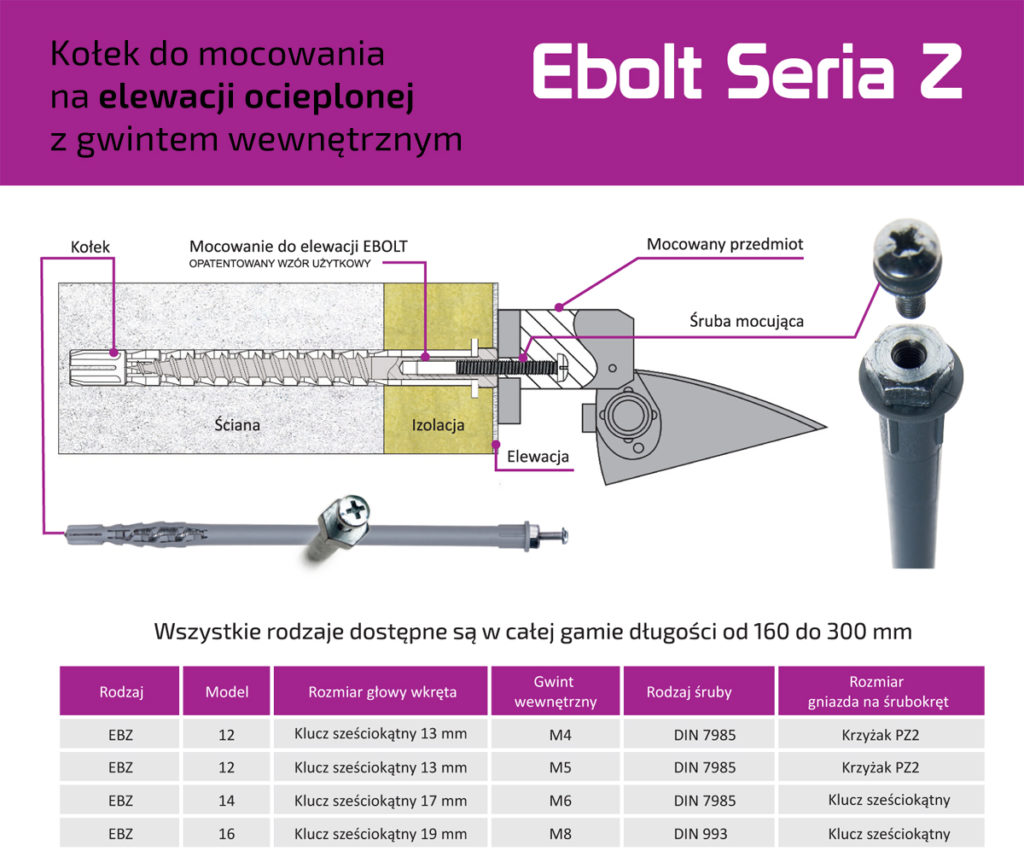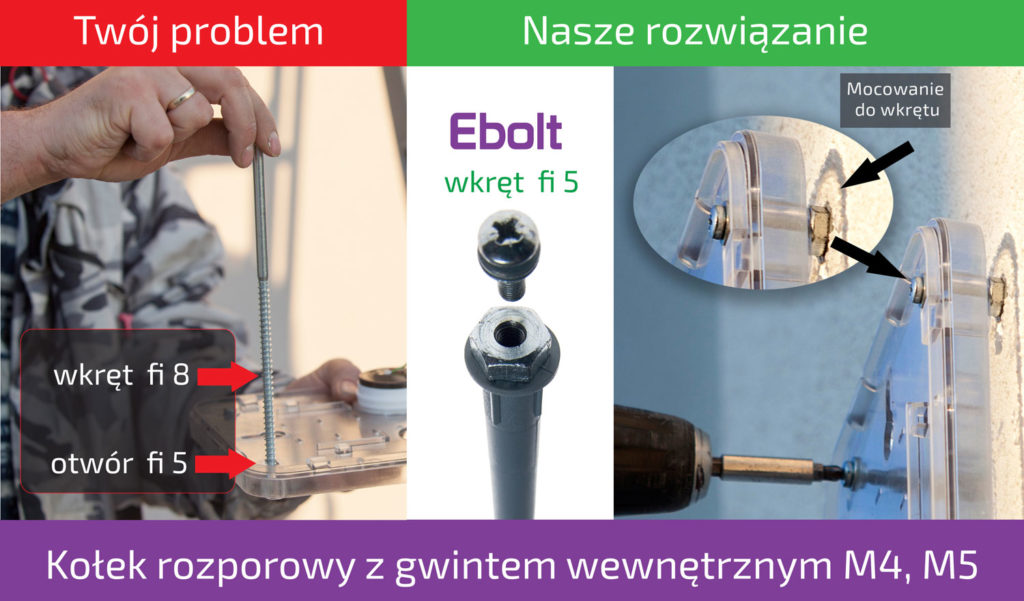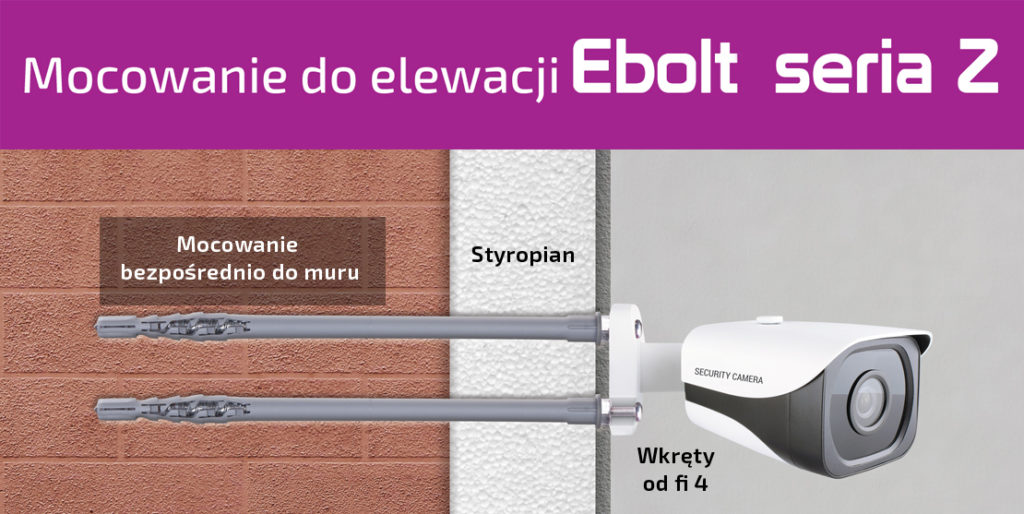On the surface, an Ebolt (consisting of an Ebolt sheathing and a screw) looks like a traditional Ebolt, but differs from a standard Ebolt in that the screw has been provided with an internal threaded hole for a screw with a diameter of M4, M5, M6 and M8 mm. Ebolt pins come in different lengths (from 160 to 400 mm) and jersey diameters (from 12 to 16 mm), allowing them to be selected to suit any insulation thickness and set directly into the masonry, achieving very stable fixings on the façade surface. Another advantage is the possibility of spacer mounting. The screw with the hole then protrudes beyond the polystyrene foam. Load bearing capacity of up to 40 kg. Depends on the screw diameter.


We are often asked how to permanently fix: motion detectors, alarm sirens, heavy lamps, surveillance cameras or handrail brackets to a building insulated with polystyrene or mineral wool. The problem is the small mounting hole of fi 4 or fi 5 mm diameter made in the object to be fixed. When choosing the appropriate fastening technique, we must remember to select it according to the appropriate weight of the fastened device and the appropriate length of fastening. It is very important that the fixing is stable.
Mounting a camera on a slipping mount will result in it not fulfilling its purpose and, for example, the attached handrail may break under the pressure of people using it. Over time, there is also a risk of breaking the plaster and crushing the polystyrene or mineral wool directly under the bracket. This can result in a loss of rigidity of the wall fixing.



